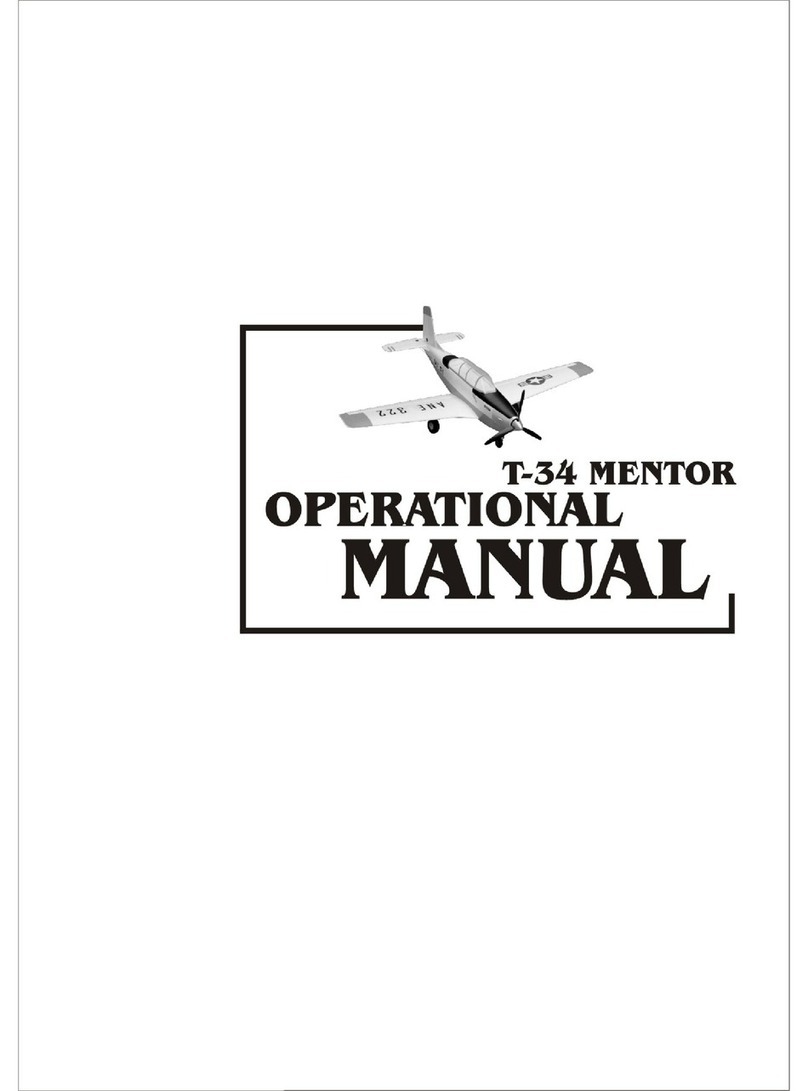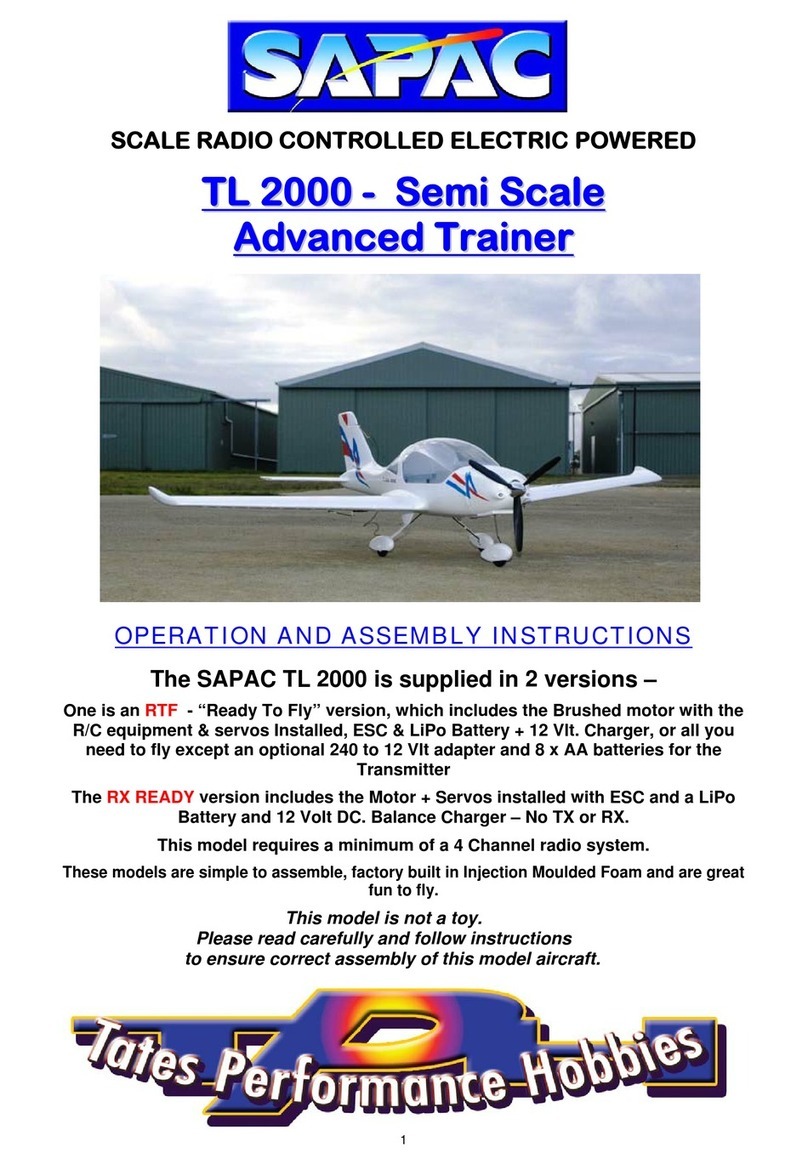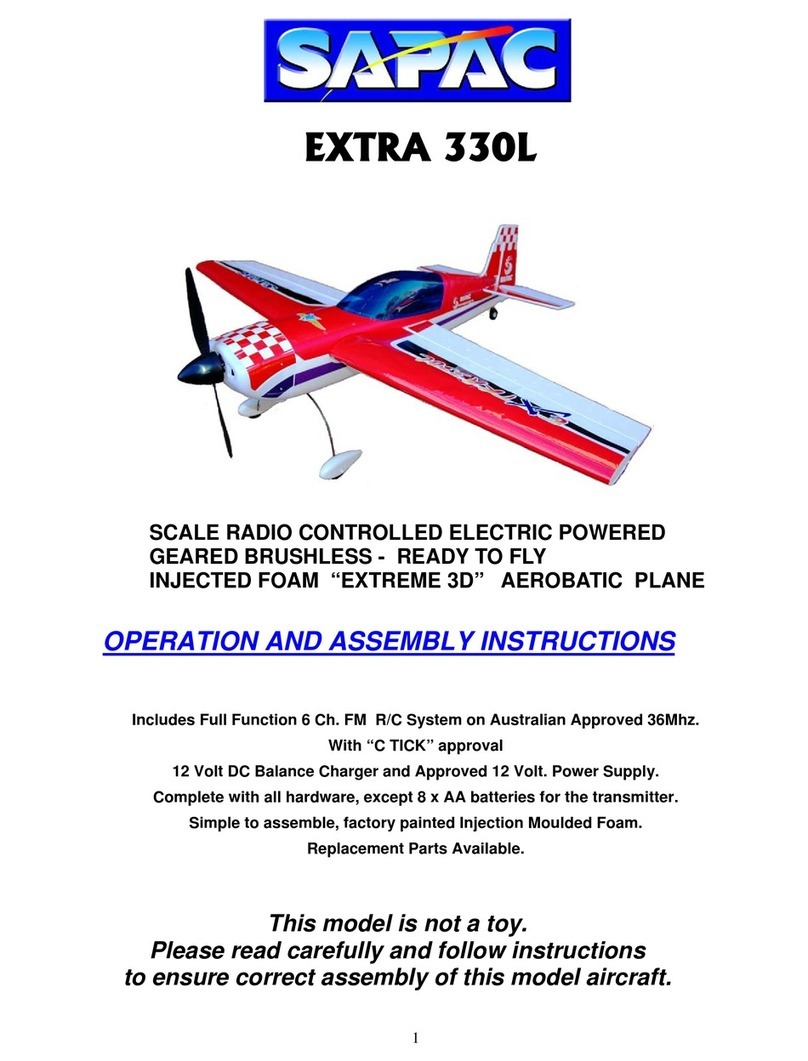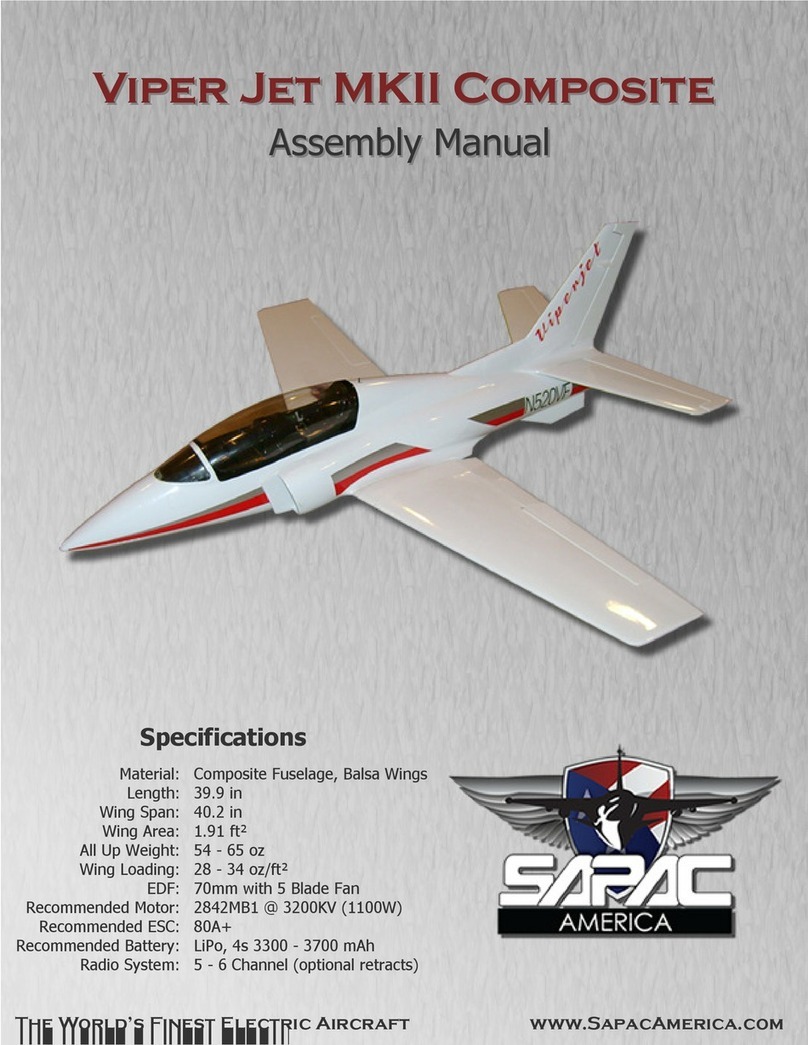3
Please Read Carefully Before Commencing
This model is not a toy. It is a highly detailed functional scale model. We hope that this product will bring you hours of
enjoyment and entertainment. Due to the sophisticated technical nature of this product, it is important that you carefully
review all of the following warnings, cautions, and warranty terms. Likewise you should review and follow the following
instructions for usage.
Due to the fact that Tates Performance Hobbies is constantly improving the quality and functional characteristics of its
products some details, colours, and functions may differ slightly from the images presented on the box and in the
instructions.
WARRANTY
Tates Performance Hobbies guarantees that this model is free from defects both in material and craftsmanship on the
date of purchase. This guarantee does not cover any component parts damaged by use or modification. Tates
Performance Hobbies liability will under no circumstances exceed the original cost of the purchased model. Moreover,
Tates Performance Hobbies reserves the right to change or modify this warranty without notice.
If upon purchasing this product the buyer finds defects to the product as a result of the manufacturing process we
recommend that you return this product to the place of purchase to exchange or refund the product.
Given that Tates Performance Hobbies has no control over the final assembly or use of this product, Tates Performance
Hobbies shall assume no liability for damage caused resulting from the use by the user of the final user-assembled
product. By using this product the user accepts all resulting liability.
If the purchaser of this product is not prepared to accept the liability associated with the use of this product, they are
advised to return this model within 14 days to the place of purchase. The product must be in complete and unused
condition along with receipt of purchase at the moment of return.
WARNINGS
1. Never leave the model in direct sunlight for prolonged periods of time.
2. Never fly this model near an AIRPORT, check with your local airport authorities for minimum distance to
available sites.
3. Never use this model near power lines, radio towers, or other locations where there is known high radio wave or
electromagnetic activity.
4. Do not allow water or liquid to touch the model or any of the components.
5. Store the model in a cool dry location as high humidity can damage the model and its components.
6. Protect the model from bumps, jolts, and concussions from other hard objects as this could damage the model.
7. Keep the model clean of dust, mud and dirt.
8. Never place foreign objects on top of the model
9. Use the model ONLY in wide open spaces that are free of people, or at your local RC flight club.
10. NEVER use the model near populated pedestrian areas. This could lead to damage of property or injury to
bystanders.
11. Prior to take off, always check that transmitter and receiver batteries are fully charged and are fresh. As battery
voltage decreases, the distance that the radio signal travels decreases, and control over the model could fail.
12. Please dispose of used batteries and electronic components in accordance with your municipal and federal
regulations relating to these types of products.
13. Keep in mind that those in your vicinity may also use radio control models. Please check prior to take off that
you are using a unique frequency to all those around you. Not doing so may cause you and others to lose
control of the model.
14. If the model does not properly respond to control inputs, land immediately and do not attempt to use the model
until the cause has been determined and fixed.
15. After flying, switch off the power on the model and then the transmitter.
CAUTIONS
1. This product is not suitable for children under 14 years of age, adult supervision of children under this age is
highly recommended.
2. This kit contains a number of small parts which are fragile and may act as choking hazards.
3. Please store and assemble this model well out of the reach of small children.
4. Only use batteries of the same or equivalent type.
5. The power supply terminals are not to be short-circuited.
6. Do not use new and old batteries together. Do not mix different brands or kinds of batteries.
7. Make sure to insert batteries with correct (+) and (-) polarity.
8. If the model gets wet, dry it, and do not use, to avoid short-circuiting that may cause hazards.
9. Do not put fingers, hair, or clothes into the shafts or rotating parts of the model.
10. NEVER LEAVE CHARGING BATTERIES UNATTENTED!!!!!!
PRODUCT CONTAINS SMALL PARTS - KEEP AWAY FROM YOUNG CHILDREN
NOT SUITABLE FOR CHILDREN UNDER 14 YEARS OF AGE UNLESS SUPERVISED BY AN ADULT
COLORS, SPECIFICATONS AND CHARACTERISTICS MAY BE DIFFERENT FROM PICTURE AND DESCRIPTON
ON THE BOX AND MANUAL.
Tates
Performance
Hobbies
may
be
contacted
b
y
E
Mail
on
–
[email protected] or Phone 03 52224201 
































